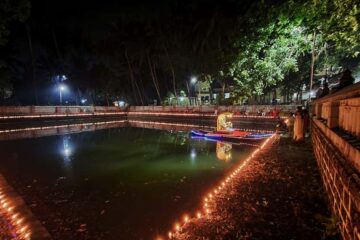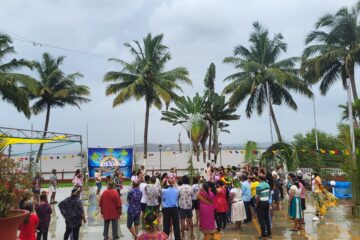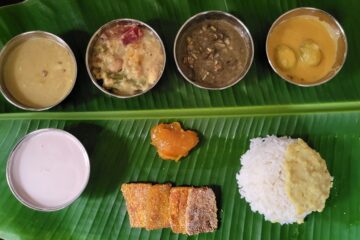Diwali is truly the king of all Indian festivals — loved by one and all, young and old alike. However, the way it is celebrated differs from state to state. At its heart, Diwali is about spending time with family and sharing happiness. This joy is expressed through lighting diyas, decorating homes and courtyards with colourful rangolis, and distributing sweets.
Diwali begins on Guru Dwadashi and concludes on Yamadvitiya, also known as Bhau Beej. Between these two days come four other significant festivals — Dhanatrayodashi, Narak Chaturdashi, Lakshmi Pujan, and Bali Pratipada (Padwa). In Gujarat, Dhanatrayodashi is celebrated with great enthusiasm, while in Maharashtra, Padwa holds special importance. But in Goa, it is Narak Chaturdashi and Lakshmi Pujan that are most significant. Padwa and Dhanatrayodashi do not hold much prominence here.

On Narak Chaturdashi, people of all ages wake up early, bathe, perform the traditional ovāḷṇi ritual, and then dress up in new clothes and jewellery to visit temples. They also visit the neighoubaring homes to seek blessings of olders and exchange greetings. Guests are warmly welcomed and served a variety of poha (flattened rice) dishes along with other special preparations.
Just as festive snacks (faral) are the essence of Diwali in Maharashtra, poha defines Diwali in Goa. Every household prepares different varieties of it. Even the invitation for Diwali here goes like, ” Fov khavpak yo” meaning “Come over to our place for poha!” — that’s how central it is to the Goan celebration. These dishes are usually made from locally milled red hand-pounded poha. Some popular varieties include Doodh Pohe (poha in milk), Rosatle Phov (poha in coconut milk and jaggery), Batat Phov (poha with potatoes), and Dahyatle Phov (poha in curd). Alongside, Goans also make usal — usually sprouted moong or white peas. Another unique dish prepared during Diwali, especially in Saraswat households, is Ambadyachi Karam, made from the tangy coastal fruit ambado (hog plum).

One of the most distinctive aspects of Goan Diwali is the slaying of the demon Narakasura.
The day before Narak Chaturdashi, giant effigies of Narakasura are erected across Goa. Days in advance, young boys and men gather to build these effigies. Traditionally, they were made using wooden frames, but nowadays, iron rods form the structure. Wooden planks shape the chest, arms, and legs, which are stuffed with dry grass and covered with layers of paper. Gradually, an enormous demon takes form. The effigy is then dressed in bright clothes and decorated with ornaments. As Diwali nears, markets are filled with colourful Narakasura faces of all sizes. Once the effigy is complete, the head is attached — bringing Narakasura “to life.”


In the week leading up to Diwali, children are busy making these effigies. Across Goa, you can see Narakasuras in every possible shape and expression — some majestic like kings, others terrifying and monstrous. Crowds gather late into the night to admire them. In the early morning hours of Narak Chaturdashi, these effigies are burnt, symbolizing the victory of good over evil. Competitions are even held to showcase scenes from Krishna’s battle with Narakasura, drawing large and enthusiastic crowds.

On Lakshmi Pujan evening, every household and shop performs the ritual worship of Goddess Lakshmi. After completing the puja at home, people visit each other’s houses for greetings, friendly chats, and of course, more poha! These two days of Diwali in Goa pass in cheerful celebration, after which life slowly returns to its regular rhythm.
The festival of Bhau Beej is celebrated as per convenience — either on the day itself or whenever brothers and sisters can meet. After this, Goans eagerly look forward to Tulsi Vivah — the symbolic wedding of the holy basil plant. With this ritual, the grand Diwali season officially concludes. Lanterns and lights are taken down from homes, marking the end of the festivities.
Thus ends the Goan Diwali — a festival filled with the diverse flavours of poha, the grand spectacle of Narakasura’s destruction, and the joyful exchange of love and goodwill.


